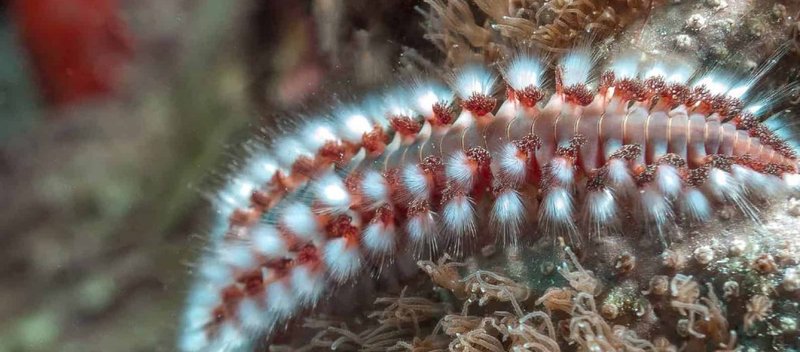
Bristle worms are not just your average sea creatures; they have unique adaptations and behaviors that make their reproductive cycle particularly captivating. From the way they mate to how they care for their young, every step of their cycle is like a chapter in a thrilling novel. So, grab your favorite drink, and let’s dive into the world of bristle worms and explore their remarkable reproductive journey.
What Are Bristle Worms?
Bristle worms, or *Polychaeta*, belong to a large class of segmented worms. These creatures typically inhabit marine environments, which makes them crucial to oceanic ecosystems. They often have long, segmented bodies adorned with tiny hair-like structures called chaetae (or bristles). These bristles are not just for show; they help the worms move through their habitats and find food.
You might be wondering how these worms fit into the wider ecosystem. Bristle worms play a significant role as scavengers, feeding on organic matter on the ocean floor. This helps keep the ocean clean and boosts nutrient recycling. Plus, bristle worms serve as food for many fish and other marine animals, making them an essential link in the food chain.
The Unique Mating Process
Here’s the thing: bristle worms don’t stick to the traditional courtship we see in many animal species. Instead, their mating process can be pretty complex and varies among species. In most cases, they engage in a ritual known as *epitoky*, where a segment of the worm’s body transforms into a reproductive form called an epitoke.
During this transformation, the worm’s body becomes more vibrant and usually develops specialized structures for reproduction. Think of it like a caterpillar turning into a butterfly, only this change is geared toward mating! Once ready, the epitoke worms swim to the surface of the water, where a mesmerizing spawning event occurs.
Spawning: An Underwater Spectacle
When bristle worms are ready to spawn, they create quite a spectacle. Hundreds—or even thousands—of these worms gather in a mating frenzy at the ocean’s surface. It’s an incredible sight to witness! They release their eggs and sperm into the water, where fertilization happens externally.
This method is risky, though. Many eggs and larvae become food for hungry predators lurking in the ocean. It’s a bit like a lottery; only a few of the fertilized eggs will grow into mature worms. The sheer number of eggs released reflects nature’s strategy to increase the odds of survival.
The Development of Larvae
Once the eggs are fertilized, they develop into tiny larvae called *trochophores*. These larvae are free-swimming and resemble small, spinning tops. Here’s where things get interesting: trochophores have the flexibility to drift with ocean currents, which can carry them far from where they were spawned, giving them a chance to colonize new areas.
During this larval stage, they undergo several transformations. After some time, they develop into the next stage called *metatrochophore*, which is a more advanced larval form. This stage sets the groundwork for their future as adult bristle worms, as they begin to exhibit the characteristics of their segmented forms.
Transition to Adult Life
After their larval phase, bristle worms eventually settle into their adult forms. This transition can take a few weeks to several months, depending on the species and environmental conditions. Once they settle, they develop into segmented worms, complete with their signature bristles.
As adults, bristle worms can grow to impressive lengths. Some species reach up to several feet! They become benthic creatures, which means they live on the seafloor, where they continue their role in the ecosystem as scavengers and predators of smaller organisms.
Life Cycle: From Birth to Reproduction
The life cycle of bristle worms is a breathtaking journey, taking them from microscopic larvae to mature adults capable of reproduction. After reaching maturity, they will start the cycle all over again, perpetuating their species.
The full cycle can vary from one species to another, but in general, it can take anywhere from a few months to several years from egg to mature adult. Factors like water temperature, food availability, and environmental conditions can all influence the pace of this life cycle.
Why Understanding Bristle Worm Reproduction Matters
So, you might be asking yourself, “Why should I care about how bristle worms reproduce?” Well, understanding the reproductive cycle of these creatures helps researchers gauge the health of marine ecosystems. Since bristle worms play a crucial role in sediment turnover and nutrient cycling, knowing their life cycle can provide valuable insights into the overall balance of ocean life.
Moreover, as we face challenges like climate change and ocean pollution, monitoring these life cycles can reflect broader environmental changes. Keeping an eye on bristle worms can signal shifts in marine ecosystems, helping us make informed decisions about conservation and management efforts.
Exploring the reproductive cycle of bristle worms offers a fascinating glimpse into the complexities of marine life. From their unique mating rituals to the challenges of survival in the ocean, these worms embody the resilience of nature.
Understanding their life cycle not only enriches our knowledge of these remarkable creatures but also highlights the importance of healthy ocean ecosystems. So, the next time you think about the vibrant underwater world, remember the little bristle worms and their vital role in keeping the oceans teeming with life.
